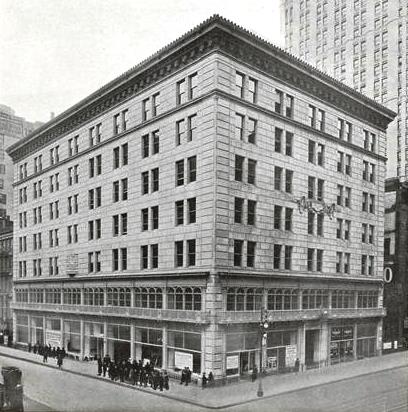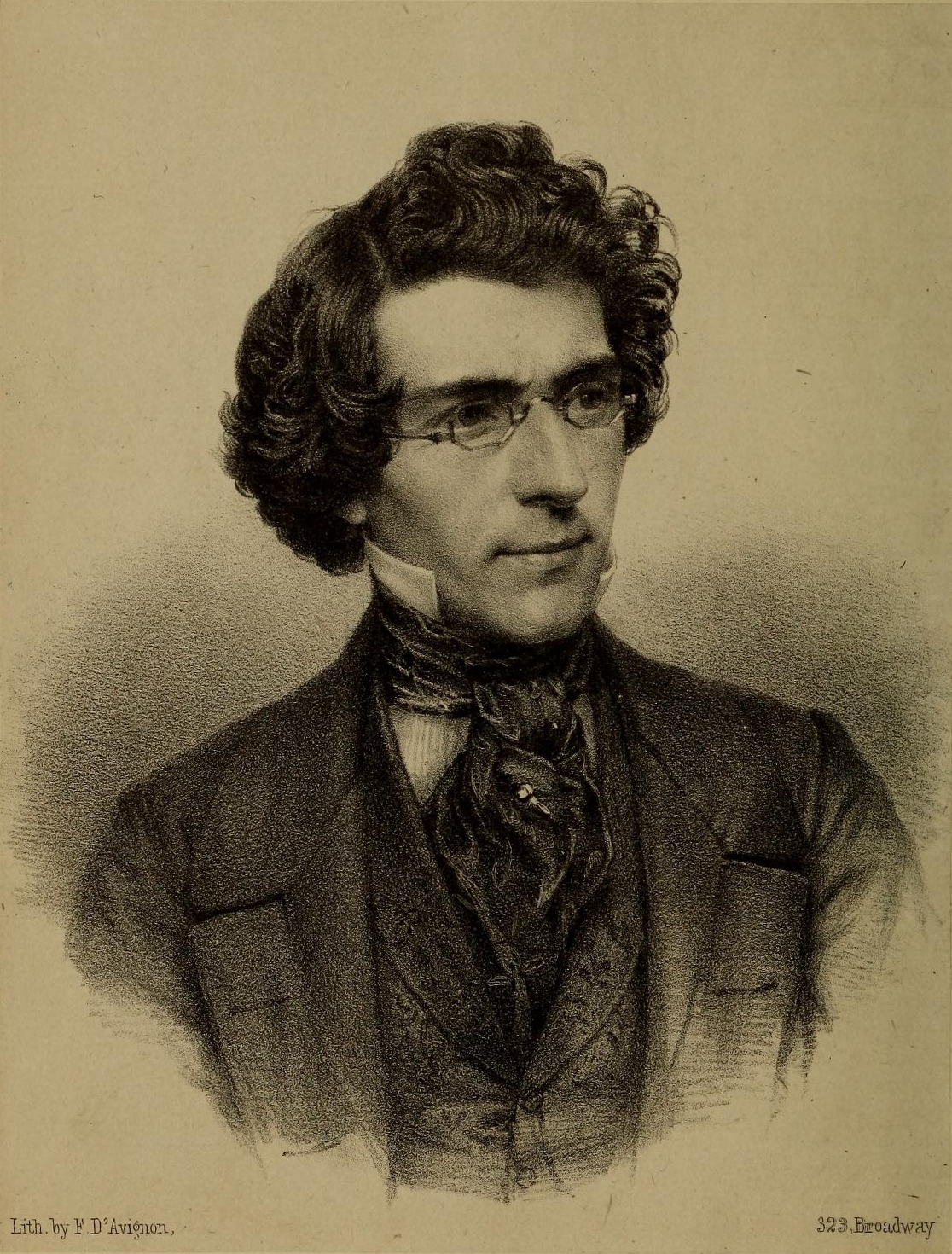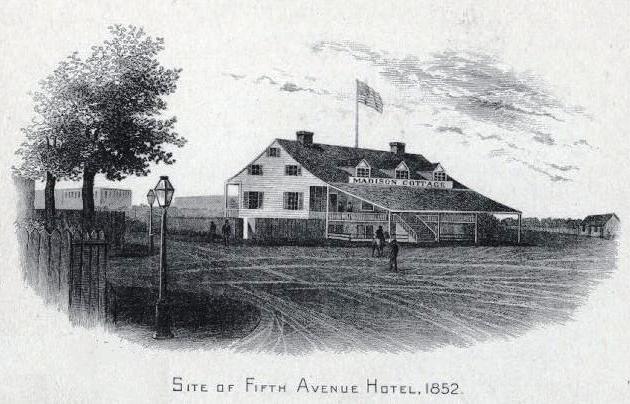|
Astor House
The Astor House was a luxury hotel in New York City. Located on the corner of Broadway and Vesey Street in what is now the Civic Center and Tribeca neighborhoods of Lower Manhattan, it opened in 1836 and soon became the best-known hotel in America. Part of it was demolished in 1913; the rest in 1926. History and description The Astor House was built by John Jacob Astor, who assembled the lots around his former house until he had purchased the full block in the heart of the city's most fashionable residential district. Construction began in 1834,Stone, May N. "Astor House" in , p.73 and the hotel opened in June 1836 as the Park Hotel. It was located on the west side of Broadway between Vesey and Barclay Streets, across from City Hall Park and diagonally across from the offices of the ''New York Herald''. The building was designed by Isaiah Rogers, who in 1829 had designed the first luxury hotel in the United States, the Tremont House, in Boston. The large four-square block was ... [...More Info...] [...Related Items...] OR: [Wikipedia] [Google] [Baidu] |
Trinity Church (Manhattan)
Trinity Church is a historic parish church in the Episcopal Diocese of New York, at the intersection of Wall Street and Broadway (Manhattan), Broadway in the Financial District, Manhattan, Financial District of Lower Manhattan in New York City. Known for its history, location, architecture and endowment, Trinity is a traditional high church, with an active parish centered around the Episcopal Church (United States), Episcopal Church and the worldwide Anglican Communion in missionary, outreach, and fellowship. In addition to its main facility, Trinity operates two chapels: St. Paul's Chapel, and the Chapel of St. Cornelius the Centurion on Governors Island. The Church of the Intercession (Manhattan), Church of the Intercession, the Trinity Chapel Complex and many other of Anglican congregations in Manhattan were part of Trinity at one point. Columbia University was founded on the church's grounds as King's College in 1754. The current building is the third constructed for Trinity ... [...More Info...] [...Related Items...] OR: [Wikipedia] [Google] [Baidu] |
Alice Austen
Elizabeth Alice Austen (March 17, 1866 – June 9, 1952) was an American photographer working in Staten Island. Biography Alice Austen was born in 1866 to Alice Cornell Austen and Edward Stopford Munn. Austen's father abandoned the family around 1869. Her great great grandfather, Peter Townsend, was the owner of Sterling Iron Works famous for forging the Hudson River Chain used to thwart British ships during the American Revolutionary War. Austen was introduced to photography at age 10 in 1876. A second-floor closet of her home on the shoreline of the New York Narrows Harbor served as her darkroom. In this home studio, which was also one of her photographic muses, she produced over 7,000 photographs of a rapidly changing New York City, making significant contributions to photographic history, documenting New York's immigrant populations, Victorian women's social activities, and the natural and architectural world of her travels. One of America's first female photographers ... [...More Info...] [...Related Items...] OR: [Wikipedia] [Google] [Baidu] |
Fanny Kemble
Frances Anne "Fanny" Kemble (27 November 180915 January 1893) was a British actress from a theatre family in the early and mid-19th century. She was a well-known and popular writer and abolitionist, whose published works included plays, poetry, eleven volumes of memoirs, travel writing and works about the theatre. Kemble's "lasting historical importance...derives from the private journal she kept during her time in the Sea Islands" on her husband's plantations, where she wrote a journal documenting the conditions of the enslaved people on the plantation and her growing abolitionist feelings. Early life and education A member of the famous Kemble theatrical family, Fanny was the eldest daughter of the actor Charles Kemble and his Viennese-born wife, the former Marie Therese De Camp. She was a niece of the noted tragedienne Sarah Siddons and of the famous actor John Philip Kemble. Her younger sister was the opera singer Adelaide Kemble. Fanny was born in London and educated ... [...More Info...] [...Related Items...] OR: [Wikipedia] [Google] [Baidu] |
Henry Wadsworth Longfellow
Henry Wadsworth Longfellow (February 27, 1807 – March 24, 1882) was an American poet and educator. His original works include "Paul Revere's Ride", ''The Song of Hiawatha'', and ''Evangeline''. He was the first American to completely translate Dante Alighieri's ''Divine Comedy'' and was one of the fireside poets from New England. Longfellow was born in Portland, Maine, which was then still part of Massachusetts. He graduated from Bowdoin College and became a professor there and, later, at Harvard College after studying in Europe. His first major poetry collections were ''Voices of the Night'' (1839) and ''Ballads and Other Poems'' (1841). He retired from teaching in 1854 to focus on his writing, and he lived the remainder of his life in the Revolutionary War headquarters of George Washington in Cambridge, Massachusetts. His first wife, Mary Potter, died in 1835 after a miscarriage. His second wife, Frances Appleton, died in 1861 after sustaining burns when her dress caught ... [...More Info...] [...Related Items...] OR: [Wikipedia] [Google] [Baidu] |
William James
William James (January 11, 1842 – August 26, 1910) was an American philosopher, historian, and psychologist, and the first educator to offer a psychology course in the United States. James is considered to be a leading thinker of the late 19th century, one of the most influential philosophers of the United States, and the "Father of American psychology". Along with Charles Sanders Peirce, James established the philosophical school known as pragmatism, and is also cited as one of the founders of functional psychology. A ''Review of General Psychology'' analysis, published in 2002, ranked James as the 14th most eminent psychologist of the 20th century. A survey published in ''American Psychologist'' in 1991 ranked James's reputation in second place, after Wilhelm Wundt, who is widely regarded as the founder of experimental psychology. [...More Info...] [...Related Items...] OR: [Wikipedia] [Google] [Baidu] |
Mathew Brady
Mathew B. Brady ( – January 15, 1896) was one of the earliest photographers in American history. Best known for his scenes of the American Civil War, Civil War, he studied under inventor Samuel Morse, who pioneered the daguerreotype technique in America. Brady opened his own studio in New York City in 1844, and photographed Andrew Jackson, John Quincy Adams, and Abraham Lincoln, among other public figures. When the Civil War started, his use of a mobile studio and darkroom enabled vivid battlefield photographs that brought home the reality of war to the public. Thousands of war scenes were captured, as well as portraits of generals and politicians on both sides of the conflict, though most of these were taken by his assistants, rather than by Brady himself. After the war, these pictures went out of fashion, and the government did not purchase the master-copies as he had anticipated. Brady's fortunes declined sharply, and he died in debt. Early life Brady left little recor ... [...More Info...] [...Related Items...] OR: [Wikipedia] [Google] [Baidu] |
The New York Times
''The New York Times'' (''the Times'', ''NYT'', or the Gray Lady) is a daily newspaper based in New York City with a worldwide readership reported in 2020 to comprise a declining 840,000 paid print subscribers, and a growing 6 million paid digital subscribers. It also is a producer of popular podcasts such as '' The Daily''. Founded in 1851 by Henry Jarvis Raymond and George Jones, it was initially published by Raymond, Jones & Company. The ''Times'' has won 132 Pulitzer Prizes, the most of any newspaper, and has long been regarded as a national " newspaper of record". For print it is ranked 18th in the world by circulation and 3rd in the U.S. The paper is owned by the New York Times Company, which is publicly traded. It has been governed by the Sulzberger family since 1896, through a dual-class share structure after its shares became publicly traded. A. G. Sulzberger, the paper's publisher and the company's chairman, is the fifth generation of the family to head the pa ... [...More Info...] [...Related Items...] OR: [Wikipedia] [Google] [Baidu] |
Christopher Gray
Christopher Stewart Gray (April 24, 1950 – March 10, 2017) was an American journalist and architectural historian,Schneider, Daniel B (August 27, 2000)"F.Y.I. Hell's Kitchen in the Raw" ''The New York Times''. March 4, 2010. noted for his weekly column "Streetscapes" in ''The New York Times'', about the history of New York City architecture, real estate and public improvements."Christopher Gray" ''The New York Times''. Retrieved March 4, 2010. . Retrieved March 4, 2010. Career Gray wrote the "Streetscapes" column from 1986 until December 2014. His work focuses on architecture, history and preservation policies o ...[...More Info...] [...Related Items...] OR: [Wikipedia] [Google] [Baidu] |
BREAKFAST MENU (held By) ASTOR HOUSE (at) LADIES' ORDINARY On Friday, August 25, 1843 (NYPL Hades-1933235-ps Rbk 701) (cropped)
Breakfast is the first meal of the day usually eaten in the morning. The word in English refers to breaking the fasting period of the previous night.Anderson, Heather Arndt (2013)''Breakfast: A History'' AltaMira Press. Various "typical" or "traditional" breakfast menus exist, with food choices varying by regions and traditions worldwide. History The English word "dinner" (from Old French ) also referred originally to breaking a fast; until its meaning shifted in the mid-13th century it was the name given to the first meal of the day. The tradition of eating a morning meal has existed since ancient times, though it was not until the 15th century that "breakfast" came into use in written English as a calque of dinner to describe a morning meal: literally a breaking of the fasting period of the night just ended. In Old English the term had been , literally "morning food." Ancient breakfast Ancient Egypt In Ancient Egypt, peasants ate a daily meal, most likely in the morning, ... [...More Info...] [...Related Items...] OR: [Wikipedia] [Google] [Baidu] |
New York And Harlem Railroad
The New York and Harlem Railroad (now the Metro-North Railroad's Harlem Line) was one of the first railroads in the United States, and was the world's first street railway. Designed by John Stephenson, it was opened in stages between 1832 and 1852 between Lower Manhattan to and beyond Harlem. Horses initially pulled railway carriages, followed by a conversion to steam engines, then on to battery-powered Julien electric traction cars. In 1907, the then leaseholders of the line, New York City Railway, a streetcar operator, went into receivership. Following a further receivership in 1932, the New York Railways Corporation converted the line to bus operation. The Murray Hill Tunnel now carries a lane of road traffic, but not the buses. The line became part of the New York Central Railroad system with trackage rights granted to the New York, New Haven and Hartford Railroad into Manhattan. It is now part of the Metro-North Railroad system, and the only Manhattan trackage of th ... [...More Info...] [...Related Items...] OR: [Wikipedia] [Google] [Baidu] |
Madison Square
Madison Square is a public square formed by the intersection of Fifth Avenue and Broadway at 23rd Street in the New York City borough of Manhattan. The square was named for Founding Father James Madison, fourth President of the United States. The focus of the square is Madison Square Park, a public park, which is bounded on the east by Madison Avenue (which starts at the park's southeast corner at 23rd Street); on the south by 23rd Street; on the north by 26th Street; and on the west by Fifth Avenue and Broadway as they cross. The park and the square are at the northern (uptown) end of the Flatiron District neighborhood of Manhattan. The neighborhood to the north and west of the park is NoMad ("NOrth of MADison Square Park") and to the north and east is Rose Hill. Madison Square is probably best known around the world for providing the name of Madison Square Garden, a sports arena and its successor which were located just northeast of the park for 47 years, until 1925. The ... [...More Info...] [...Related Items...] OR: [Wikipedia] [Google] [Baidu] |




_-_William_James_in_Brazil%2C_1865.jpg)

.png)
.jpg)

